An organic guide to knowing, growing and using garlic, from Australian Whites and Tasmanian Purples to Korean Reds and Shandongs.
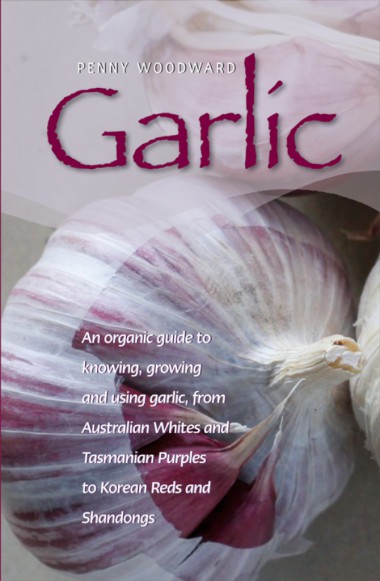
I am thrilled to say that my new book has been released and is in bookshops and can be purchased online from my website shop . If you would like your copy signed to a specific person, then send me an email through the contact page. I’ll be talking about garlic and the book on radio over the coming weeks and there will be reviews in newspapers and magazines, so keep an eye out for them.
The book has taken me three years to write, but has been much longer in it’s gestation. It covers everything from more than 50 different cultivars of garlic, to
guidelines for growing organic garlic around the country as well as interviews with
twelve Australian garlic growers telling you how and where they grow their garlic.
There are also recipes for cooking, preserving and smoking garlic and even making your own black garlic as well as medicinal uses and an extensive list of growers and suppliers.
This book starts to make sense of the confusion surrounding garlic and explains that garlic is not just garlic, it is Creole, Rocambole, Purple Stripe, Turban, Silverskin and more.
These are a couple of short extracts from the book, starting with Garlic Thoughts Read more
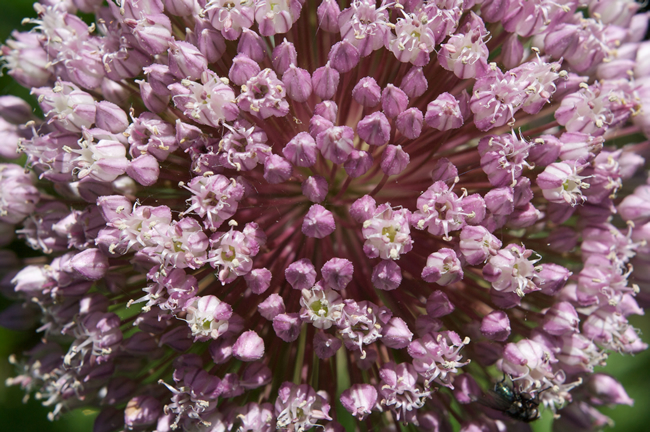
Insects and bees love the nectar in elephant garlic flowers
Elephant garlic, also commonly called Russian garlic, is occasionally found listed in seed and bulb catologues and seed saver lists. In some regions it is found naturalised on old house sites and it is a welcome, or sometimes, unwelcome inhabitant of many suburban gardens – but it is not garlic.
So what is it? Its botanical name is Allium ampeloprasum (Ampeloprasum Group) ‘Elephant Garlic’ and it is actually a close relative of the leek, A. ampeloprasum (Porrum Group). It is only more distantly related to true garlic (A. sativum). Other common names are giant garlic, great-headed garlic, Levant garlic, Yorktown onion, and in French, ail d’orient, and German, pferdknoblauch. Read more
Last weekend saw a celebration of old cultivars and varieties of both fruit and vegetables. At Diggers Heronswood, Dromana it has been the Harvest Festival Weekend with a really beautiful array of pumpkins and squashes, garlic for sale and tomatoes to taste. Nearly all of these are heirloom or open pollinated varieties that are so important both for our gardening history and our future. Heirloom and heritage varieties are an integral part of organic gardening, many are the result of selective breeding over numerous generations so that they show special characteristics.
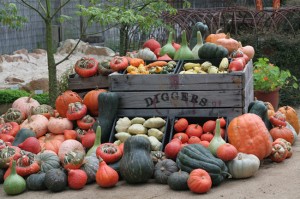
Turk's Turban, Delicata, Potimarron, Australian Butter, Buttercup and Bohemian are just a few of the heirloom varieties of pumpkins available to grow.
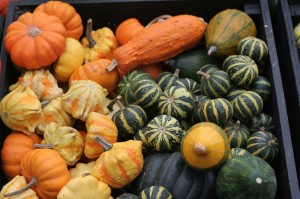
Heirloom varieties of squash, gourds and small pumpkins
Read more
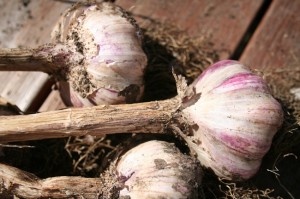
Garlic 'New Zealand Purple' is a more cold tolerant variety
Now is the time to plant garlic. Don’ t wait until the shortest day as this is generally too late. Anytime from now until the end of May is fine.
I am planting some early garlic now, and in another month some of my home-grown from last year and a month after that some more. I want to make sure that I have my own fresh garlic available all year round.
Why grow your own?
— We are all used to the idea that tomatoes eaten straight from the garden taste so much better than the supermarket variety. Well the same is true for garlic.
— Garlic is easy to grow and takes up very little space.
— All imported garlic is sprayed with methyl bromide when it comes into Australia, not only does methyl bromide deplete ozone, but it is also harmful to humans. As well as this, much of our imported garlic comes from China where pesticides are routinely used, and only 5% of vegetables imported from China are checked for chemical residue. Read more





